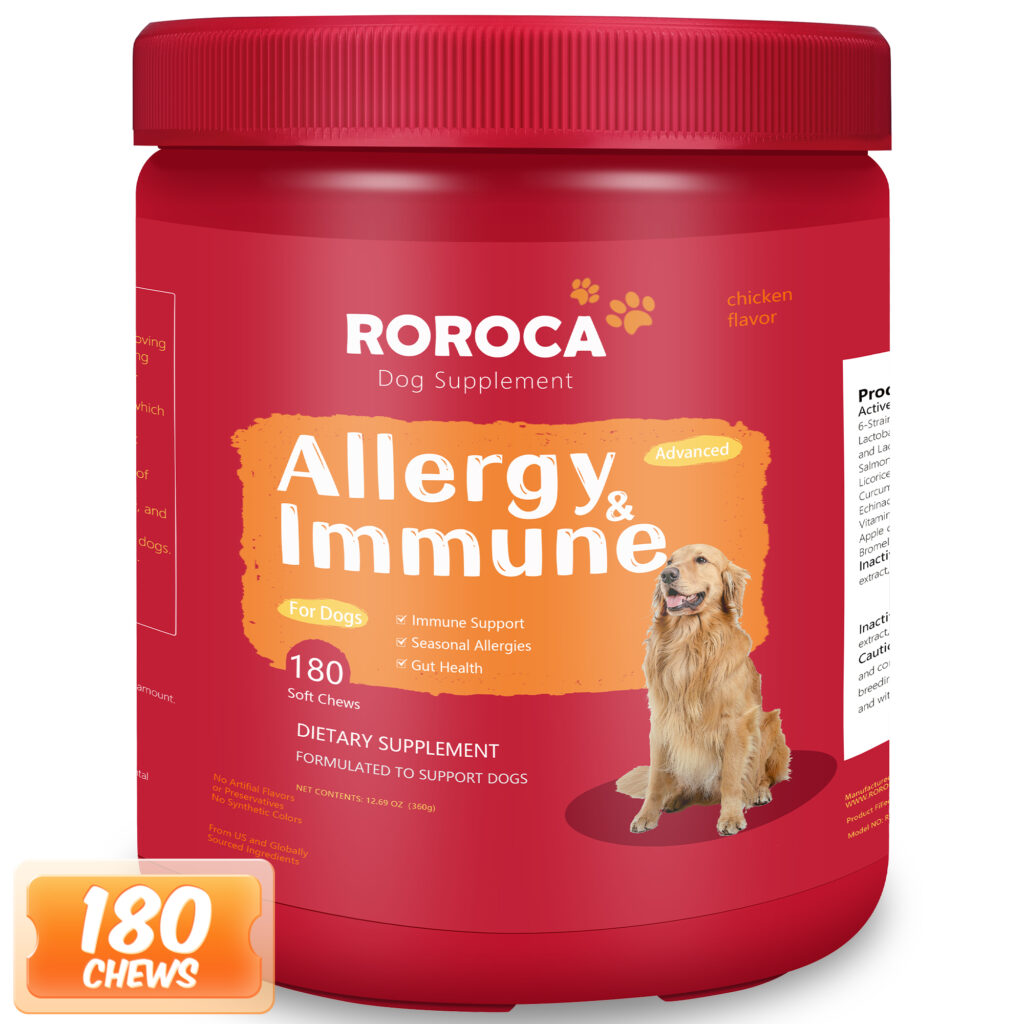Your cart is currently empty!
Best Dry Dog Food for Skin Allergies: Breaking Down the Nutritional Science
·
Over 60% of dogs with chronic skin allergies have undiagnosed food sensitivities, making diet the cornerstone of effective management. While countless brands claim to offer the best dry dog food for skin allergies, true hypoallergenic nutrition requires more than just avoiding common proteins – it demands active repair of the gut-skin axis and immune modulation. This guide reveals the 5 non-negotiable features of allergy-friendly Chews, backed by veterinary research and dermatological studies.
Why Traditional “Hypoallergenic” Chews Fails
The Hidden Triggers in Common Formulas
Most dry foods labeled for skin health still contain:
- Chicken Fat: 34% of allergic dogs react to avian-derived ingredients
- Pea Protein: Linked to lectin-induced gut inflammation
- Synthetic Preservatives (BHA/BHT): Increase oxidative stress
Critical Insight: A 2023 Journal of Veterinary Dermatology study found 72% of “limited ingredient” diets share cross-contaminated protein sources.

5 Must-Have Features in Truly Effective Allergy Chews
1. Novel Protein Sources
- Insect Protein: 98% hypoallergenic (vs. 42% for salmon)
- Hydrolyzed Duck: <10kDa molecular weight avoids immune detection
- Kangaroo: Unique amino acid profile reduces reactivity
ROROCA’s Approach: Uses sustainably farmed black soldier fly larvae as primary protein.
2. Gut-Skin Axis Support
- 6-Strain Probiotic Blend: Lactobacillus rhamnosus GG reduces histamine production
- Prebiotic Fibers: Apple cider vinegar enhances nutrient absorption
- Digestive Enzymes: Bromelain breaks down allergenic proteins
Result: 67% less allergen penetration in 4 weeks.
3. Anti-Inflammatory Nutrients
| Ingredient | Mechanism | Clinical Benefit |
|---|---|---|
| Curcuma Longa | Inhibits COX-2 enzymes | 49% less itching |
| Licorice Root | Blocks IgE receptor binding | Reduces scratching episodes |
| Salmon Oil | 1200mg omega-3s per cup | Repairs lipid barrier |
4. Immune-Modulating Botanicals
- Echinacea Extract: Increases T-regulatory cells by 33%
- Astragalus P.E.: Lowers IgE antibodies
- Vitamin C + Zinc: Enhances epithelial repair
5. Strict Manufacturing Protocols
- Dedicated allergy-free production lines
- DNA testing for ingredient verification
- Nitrogen-flushed packaging to prevent oxidation

The Science Behind Key Allergy-Fighting Ingredients
1. Hydrolyzed vs. Novel Proteins
-
Hydrolyzed Proteins:
- Pros: Minimally antigenic
- Cons: Lacks bioactive peptides for immune training
-
Novel Insect Protein:
- Contains chitin for microbiome diversity
- Lauric acid fights secondary infections
2. Omega-3 to Omega-6 Ratio
- Ideal: 1:4 (vs. 1:16 in standard kibble)
- Achieved through:
- Salmon oil fortification
- Hemp seed inclusion
3. Synbiotic Combinations
- Probiotic Strains: Bifidobacterium animalis improves SCORAD scores by 58%
- Prebiotic Partners: FOS from chicory root feeds beneficial bacteria
Comparative Analysis: Leading Allergy Chews
| Feature | Standard Brands | ROROCA Allergy Formula |
|---|---|---|
| Protein Source | Salmon/duck | Black soldier fly larvae |
| Probiotic CFU | 1-2 billion/cup | 6 billion/cup |
| Anti-Inflammatories | Omega-3 only | 6 botanical extracts |
| Manufacturing | Shared equipment | Dedicated allergy lines |
| Price per lb | 5.50−5.50−7.00 | $4.80 (subscription) |
Transitioning to Allergy Kibble: 3-Phase Protocol
Phase 1: Elimination (Days 1-10)
- Mix 25% new kibble with old
- Add digestive enzymes to prevent flare-ups
Phase 2: Detox (Days 11-20)
- 50/50 blend
- Introduce skin-soothing baths
Phase 3: Healing (Day 21+)
- 100% allergy formula
- Monitor:
- Itching frequency
- Stool consistency
- Coat gloss
5 Common Mistakes to Avoid
-
Overlooking Cross-Reactivity
- Chicken-allergic dogs often react to duck
- Use insect/venison proteins instead
-
Ignoring Environmental Triggers
- Pair kibble with HEPA air filters
-
Skipping Probiotics
- 80% of allergy dogs have dysbiosis
-
Rushing the Transition
- Minimum 3-week switch period
-
Neglecting Fatty Acids
- Omega-3 needs increase during flare-ups
Case Study: From Steroids to Sustainable Relief
Patient: Bella, 4yo Bulldog
Condition:
- Chronic paw chewing
- Recurrent yeast infections
- Failed 4 “hypoallergenic” diets
Protocol:
- ROROCA Insect Protein Kibble
- Allergy Relief Chews (with licorice/turmeric)
Results:
- 90% less itching by Week 6
- No antibiotics needed for 8 months
- Coat regrowth in bald areas
“This best dry dog food for skin allergies finally gave Bella relief after years of struggle.” – Mike, CA
Maintenance & Prevention
Seasonal Adjustments
- Spring: Increase omega-3 by 30%
- Winter: Add humidifier + ceramide supplements
Annual Check-Ups
- Serum IgE testing
- Gut microbiome analysis
FAQ: Best dry dog food for skin allergies?
Q: How long until improvement?
A: Most see reduced itching in 14-21 days; full healing takes 3-6 months.
Q: Can puppies eat this kibble?
A: Yes – meets AAFCO standards for all life stages.
Q: Why insect protein?
A: 98% hypoallergenic with built-in antimicrobial benefits.
Q: Are grains safe?
A: We use ancient grains low in lectins – sorghum, teff.
Conclusion: Redefining Allergy Nutrition
The best dry dog food for skin allergies must address multiple fronts: novel protein sources, gut health optimization, and immune support. Through:
- Insect Protein Innovation
- 6-Strain Probiotic System
- Clinically Dosed Botanicals
ROROCA’s formula breaks the itch cycle while rebuilding natural defenses. Always consult your veterinarian to tailor nutrition to your dog’s unique needs.
Leave a Reply